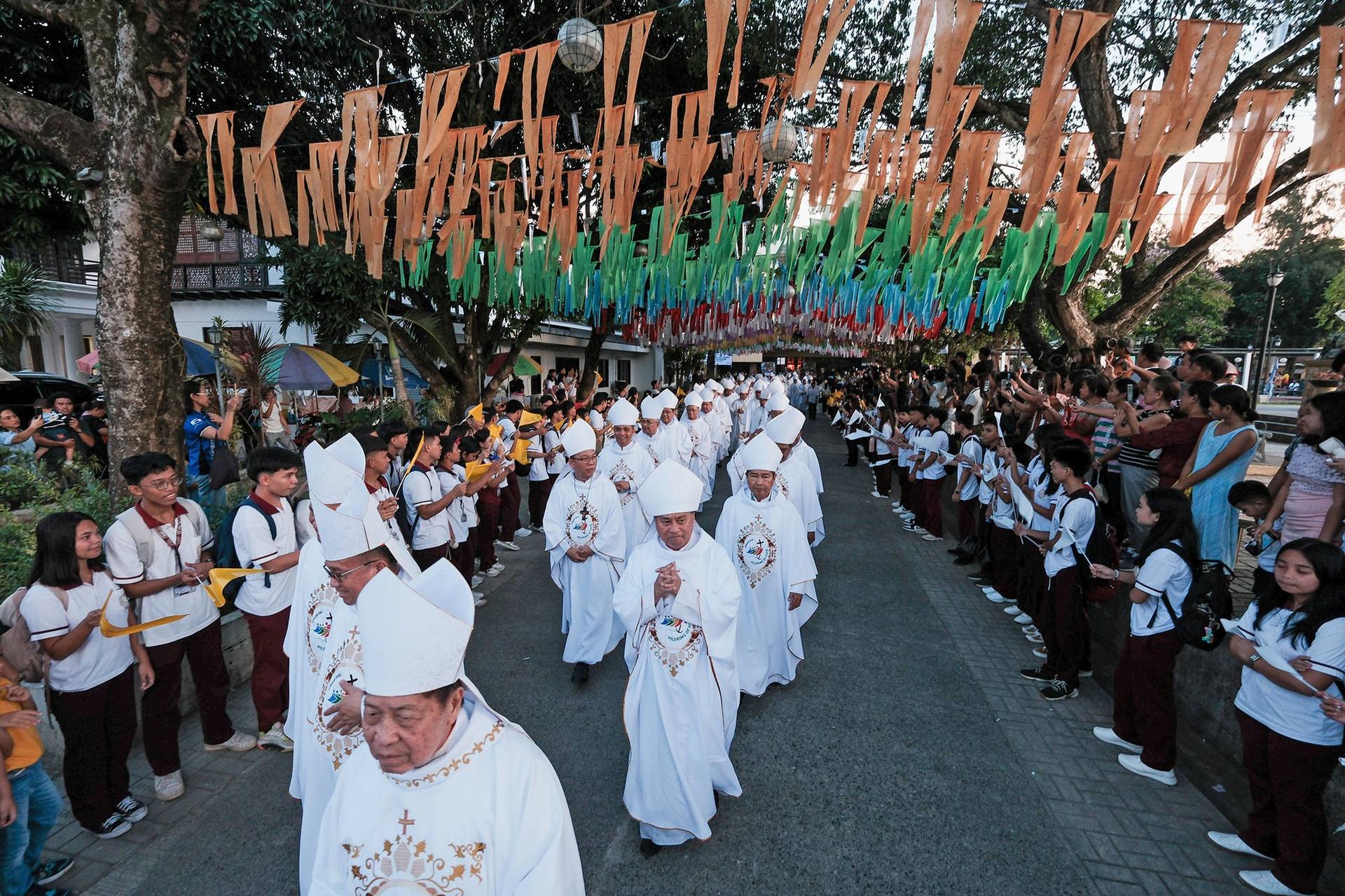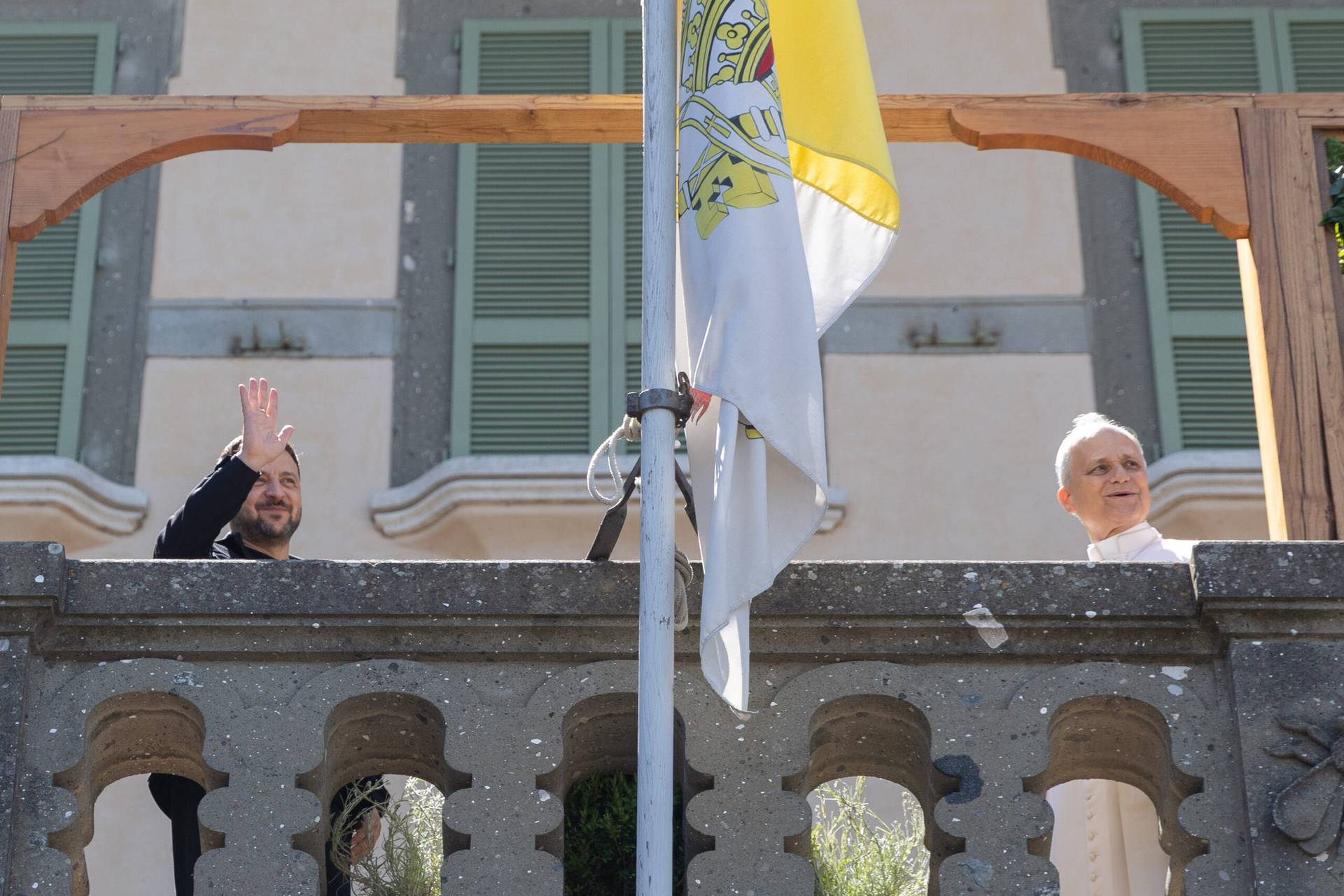ROME —”The Two Popes,” the latest attempt to tell the story of Pope Francis’s relationship with his predecessor Pope Benedict XVI, is as much an imaginary conversation as an honest attempt to convey how the two leaders actually interacted.
The two-hour long film is, almost entirely, a two-hour conversation that takes place first in the papal summer residence of Castel Gandolfo and then in the Sistine Chapel and adjacent “Room of Tears,” where the newly elected popes often get a few minutes of silent prayer before greeting the waiting crowds from the balcony in St. Peter’s Basilica overlooking the square.
Both settings, often used to portray the grandiosity of God and the Catholic Church, are a deep contrast with the incredibly human conversations, some of which take place over wine, pizza, Fanta – Benedict’s favorite soda – and a piano.
The film had a limited release in theaters Dec. 2 and will be available around the world on Netflix Dec. 20.
History is slightly re-written in this movie that claims to be “based on true events,” including the idea that then-Cardinal Jorge Mario Bergoglio traveled to Rome to meet with Pope Benedict XVI only months before he resigned the See of Peter. However, much of the dialogue can be traced to actual papal speeches and documents, and some facts are interwoven into the narrative, blurring the lines of what’s real and what’s not.
For instance, the set-up for the film is that Bergoglio is bringing his resignation as the archbishop of Buenos Aires to Benedict at Castel Gandolfo in 2012, and this begins a dialogue. That premise and interaction is fiction. However, Benedict did cut short his holiday in the papal summer residence to go back to Rome because of the Vatileaks scandal. But he went back alone instead of with an Argentine cardinal in tow.
Speaking to Rome-based journalists on Wednesday, producer Dan Lin said that the team had wanted the film to be “balanced,” a movie that “respected the Catholic Church and respected the two popes.”
The producer also said he got involved in the project because he wanted to do a film that “humanizes” the pontiffs, having them speaking with God, but also watching soccer and eating pizza.
“Despite their high regards and leadership, they have feelings, sufferings like we all do,” Lin said.
Based on the book by Anthony McCarten with the same name, “The Two Popes” is, for the most part, an honest attempt to be balanced, even if when it comes to telling the backstory of the pontiffs it focuses almost always on Bergoglio, bringing up the girlfriend he had before entering the seminary and his time working as a bouncer and in a chemistry lab.
The book was based on his research for a play the author wrote, “The Pope,” which finally got its premier earlier this year in Northampton, England, after the film had entered post-production.
RELATED: ‘The Pope’ brings drama of Benedict and Francis to stage
McCarten also wrote the script for the movie which is dialogue-heavy, with some funny, well-timed interruptions from security personnel and a smart watch that keeps reminding Benedict (and eventually Francis) that he needs to keep walking to reach his 10,000-steps-a-day goal.
From the first scenes, which include the funeral of St. John Paul II, there is a clear attempt to be balanced. Soon after a journalist offscreen is heard saying the late pope was against reform and a conservative on issues such as gay marriage and the ordination of women, Opus Dei priest Father John Wauck is seen defending the election of Benedict, not as representative of a conservative college of cardinals but of a Church that is united.
Random people applauding the election while others attack it, someone calling Ratzinger a Nazi – which later Bergoglio himself emphatically denies – and other footage taken from real life, including the warm farewell Benedict received, are all attempts to make the film balanced. They are real and mostly successful.
The dialogue also has some well-placed-funny moments, including Anthony Hopkin’s Benedict saying that the Roman Curia – the Church’s central government- is like a meat-mincing machine and that being pope is very much like “being breakfast,” or the German pontiff accusing the then-Argentine cardinal of being his biggest critic, despite there being “many candidates” for that title.
Some will take issue with how easily the script by the man behind Bohemian Rhapsody and Darkest Hour glides over the clerical abuse crisis, with Benedict only mentioning “Father Maciel” as he is confessing his faults to Bergoglio. But director Fernando Meirelles (City of God, The Constant Gardener) said in Rome on Wednesday that the decision not to focus on this issue was made on the grounds that this is a movie about these two men, not the Church.
If one watches “The Two Popes” expecting a faithful representation of the facts, then one is bound to be disappointed. The dialogue brims with wit, warmth and some tantalizing what-ifs. Yet despite the truthfulness of much of it, some actual quotes are out of context, and there’s an obvious bias from the author and director towards Francis over Benedict.
Actor Jonathan Pryce also acknowledged being a pro-Pope Francis man, not from a religious point of view, but as a political leader on issues such as climate change, migration and his call to “build bridges, not walls.”
The audience’s enjoyment will depend on each viewer’s threshold for artistic license.
However, at the end of the film (spoiler alert!), one fundamental truth is loud and clear, and it is one that might enrage some who deny the continuity between the two men: had Pope emeritus Benedict XVI been a part of the 2013 conclave that elected Jorge Mario Bergoglio as his successor, he would have cast a vote for the Argentine.
Follow Inés San Martín on Twitter: @inesanma
Crux is dedicated to smart, wired and independent reporting on the Vatican and worldwide Catholic Church. That kind of reporting doesn’t come cheap, and we need your support. You can help Crux by giving a small amount monthly, or with a onetime gift. Please remember, Crux is a for-profit organization, so contributions are not tax-deductible.














